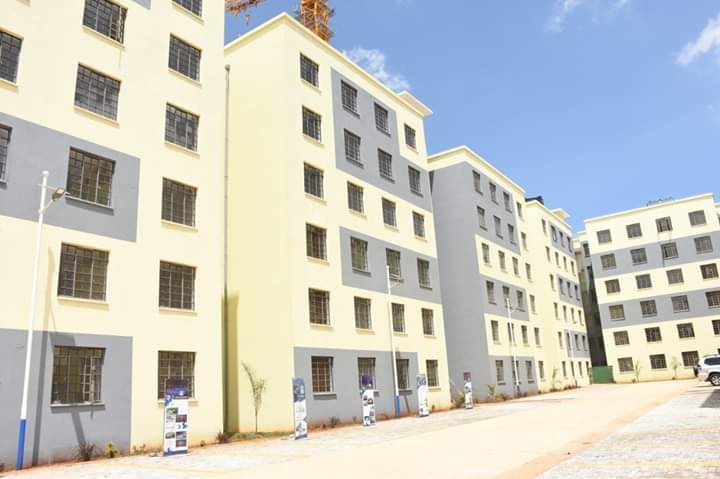Kenya is experiencing rapid urban growth—by 2050, the population is expected to double. This surge has intensified the expansion of informal settlements or slums.
Yet, through programs like the Kenya Slum Upgrading Programme (KENSUP), Drum Valley (Mathare), and initiatives in Kibera and Korogocho, Kenya is transforming these areas into vibrant, sustainable communities. In this article, we examine how slum upgrading in Kenya plays a pivotal role in improving lives and creating real estate opportunities.
1. What Is Slum Upgrading?
Slum upgrading is a multi-faceted approach that enhances housing, infrastructure, and legal status within informal settlements. It doesn’t involve relocating residents—rather, it improves existing communities by integrating them into the broader urban environment. Strategies include:
- Installing durable roads and drainage networks
- Introducing potable water and improved sanitation
- Enhancing electricity and street lighting
- Regularizing land tenure to secure residents’ investments
These improvements improve public health, safety, and quality of life for thousands of families.
2. Key Case Studies in Kenya
Kibera
One of Africa’s largest slums, Kibera is undergoing slum upgrading with support from UN-HABITAT, local NGOs, and the government. Despite major challenges—crime, fragile structures, and steep terrain—the efforts are yielding significant improvements in sanitation and housing infrastructure.
Mathare
Mathare (also known as Drum Valley) has seen long-term development efforts, including the Mathare 4A project. Community groups have been actively involved in upgrading initiatives aimed at better housing and social facilities .
Korogocho
In Korogocho, residents are driving change through grassroots efforts like Komb Green Solutions and Suluhu Hub, fostering environmental upgrades and community empowerment.
These areas reflect a shift from slum stigmatization to asset recognition: when infrastructure improves and land rights stabilize, informal settlements become livable, investable urban communities.
3. The KENSUP Model: A Closer Look
Kenya’s flagship slum upgrading initiative, KENSUP, uses an integrated model involving public agencies, NGOs, private developers, and slum residents. Its core components include:
- Community participation in planning
- Technical construction upgrades—water, drainage, roads, lighting
- Housing enhancements through incremental improvements
- Land tenure regularization to encourage private investment
This model empowers residents to stay and benefit from the changes, fostering social cohesion and urban integration.
4. Why Slum Upgrading Matters
- Health and Sanitation: Proper sewage systems reduce outbreaks of cholera and other waterborne diseases.
- Safety: Street lighting and formal roads reduce crime and improve mobility, particularly for women and children.
- Economic Opportunity: Formal addresses and tenure enable access to credit, business licenses, and reliable mail services.
- Urban Integration: Upgraded communities become valued parts of cities, encouraging greater investment.
Beyond social benefits, investors are beginning to view these areas as emerging markets with long-term potential.
5. Real Estate Implications
As slum upgrading progresses, land and properties in these areas become more valuable. Neighbourhoods once considered high-risk are becoming investment hotspots. Key dynamics include:
- Rising Land Values: Infrastructure upgrades raise plot and rental prices.
- Housing Demand: New housing units—whether incrementally built or redeveloped—are in high demand.
- Mixed Communities: The interplay of upgraded informal housing and planned projects brings investment into previously overlooked zones.
These trends position slum upgrading as not just a social program, but also a strategic element in Kenya’s real estate landscape.
6. Challenges to Overcome
Despite successes, slum upgrading faces hurdles:
- Funding Gaps: Financing major infrastructure costs remains a challenge, requiring blended public, private, and donor resources.
- Security of Tenure: Efforts to regularize land rights can be slowed by bureaucracy and informal claims.
- Community Engagement: Projects fail when local buy-in is weak, ensuing from mistrust or inadequate inclusion.
- Service Maintenance: Post-upgrade management—such as sanitation and road upkeep—is essential, yet often underfunded.
Learning from Nairobi’s various slums emphasizes the need for inclusive models, sustained funding, and strong governance.
7. How to Invest in Upgrading Zones
If you’re considering real estate in areas undergoing slum upgrading:
- Track Projects: Stay informed on government and NGO plans in places like Kibera, Mathare, and Korogocho.
- Visit Sites: Observe infrastructure progress and speak with residents and community leaders.
- Legal Vetting: Confirm land classification and tenure titles to safeguard your investment against future disputes.
- Partner Locally: Working with community groups can ease access and foster trust.
When done carefully, early-stage investing in these zones can yield high returns once full upgrades are realized.
8. Learning From Global “Slum Networking”
The concept of “slum networking”, pioneered in India, integrates drainage, sanitation, and water systems across slum clusters—leveraging geography to share services cost-effectively. Applying this in Nairobi could enhance efficiency and affordability in future upgrading phases.
9. What’s Next for Kenya?
- Expansion: The government is scaling KENSUP beyond Nairobi, to emerging hubs with growing informal settlements.
- Data-Driven Planning: Remote sensing and AI are enabling better tracking of settlement growth and upgrade effectiveness.
- Private Sector Role: Developers are increasingly exploring mixed-income projects integrated with upgraded infrastructure—an emerging market with potential.
10. Conclusion
Slum upgrading in Kenya is no longer just a humanitarian effort; it’s reshaping urban landscapes and opening new real estate avenues. By improving infrastructure, enabling landownership, and enhancing community cohesion, slum upgrading transforms informal settlements into sustainable neighborhoods. Whether you’re an investor, developer, or policy advocate, understanding these dynamics is key to both social impact and economic opportunity.
For more insights on Kenya’s changing housing landscape, read our detailed post: Transforming Informal Settlements: A Closer Look at the Kenya Slum Upgrading Programme (KENSUP).

